Using Cardboard to Control Weeds in Your Garden
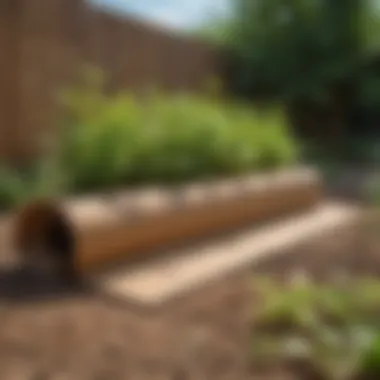
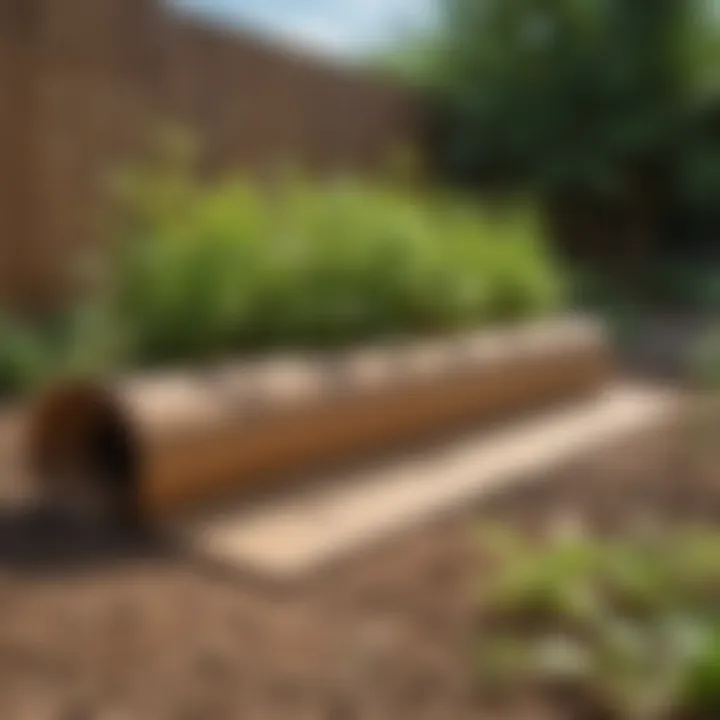
Intro
The process of gardening often morphs into a labor of love, where various methods vie for attention to manage weeds efficiently. Amid the sea of traditional techniques lies a remarkable yet frequently overlooked approach: cardboard. Using cardboard as a weed barrier presents a sustainable solution that aligns with eco-conscious practices, addressing the persistent struggle many gardeners face. Not only does it serve to suppress unwanted grass growth, but it also enhances the soil structure and nurtures beneficial microorganisms over time.
This article will delve into the properties and practical applications of cardboard, comparing them to typical weed control methods. From preparation to implementation, the aim is to guide gardeners—whether they’re new to the soil or seasoned pros—on integrating this innovative material into their gardening toolkit.
Understanding Cardboard as a Weed Barrier
Before embarking on this gardening journey, it’s crucial to grasp what cardboard is truly made of and how it interacts with the earth. At its core, cardboard is primarily composed of cellulose fibers, derived from wood pulp. This unique structure allows it to break down over time—transforming into organic matter without leaving behind toxic residues.
Using cardboard as a weed barrier is straightforward. It can efficiently smother grass and unwanted weeds underneath while decomposing and enriching the soil. The added bonus is that this method can be employed using resources that may otherwise end up in the waste bin.
Advantages of Cardboard Over Traditional Methods
There are several reasons why cardboard stacks up favorably against more conventional weed control strategies:
- Cost-effectiveness: Cardboard is often free or low-cost, compared to chemical herbicides.
- Environmentally friendly: This method avoids the use of synthetic chemicals, safeguarding the surrounding ecosystem.
- Soil enhancement: As cardboard decomposes, it fosters a fertile environment, enriching soil nutrients.
Adopting cardboard in the garden contributes to a more sustainable practice, standing in sharp contrast to the often harmful impacts of traditional weed management strategies that rely on chemicals and plastics.
"A well-timed gardening practice can pave the way for sustainable ecosystems."
Practical Steps to Implement Cardboard as a Barrier
Getting started with cardboard as a weed barrier involves a few simple steps:
- Collect cardboard: Gather boxes, cardboard sheets, or any leftover material.
- Prepare the area: Clear the garden bed of any existing weeds and debris.
- Layer installation: Lay the cardboard sheets directly onto the soil, overlapping edges to prevent gaps.
- Watering: Moisten the cardboard to help it conform to the ground, driving moisture and nutrients below.
- Covering: For aesthetic purposes or additional weed suppression, you can cover the cardboard with mulch or compost.
This step-by-step guide serves as a practical introduction to utilizing cardboard in your garden spaces, making the process seamless and accessible.
Epilogue
In a world where the choices for controlling weeds often lead one down a convoluted path of synthetic solutions, cardboard emerges as a champion of natural gardening practices. By adopting this method, gardeners not only benefit from improved soil health but also contribute to a larger movement towards sustainability. As simple as it sounds, employing cardboard speaks volumes about your commitment to environmental stewardship while enhancing your garden’s productivity. Therefore, dive into your garden with a list of cardboard materials—and watch as nature dances in response to your mindful endeavors.
Prelude to Cardboard Use in Gardening
Gardening has evolved into an art form and a peaceful escape for many, yet one of the challenges that continues to vex even the greenest thumbs is dealing with weeds. In recent times, the practice of using cardboard as a weed barrier has garnered significant attention. This approach not only helps to suppress unwanted grass growth, but it also supports a more sustainable way of gardening by incorporating materials that are often deemed waste. The significance of utilizing cardboard lies in its dual benefits: it acts as an effective physical barrier while also contributing to soil health over time.
Weeds can rapidly overrun a garden, stealing precious nutrients and sunlight from the desired plants. Understanding effective weed management strategies becomes paramount for anyone truly invested in their gardening success. Enter cardboard—an unlikely yet surprisingly effective ally. By laying down layers of cardboard, gardeners create a barrier that stifles light and inhibits the growth of weeds while simultaneously breaking down into organic matter that improves soil quality.
The benefits of using cardboard extend beyond mere weed control. It fosters an environment ripe for microbial activity and even offers habitat and sustenance for beneficial organisms. As cardboard decomposes, it enriches the garden’s ecosystem, paving a path for healthier plant growth.
Benefits of Cardboard in Gardening:
- Suppresses weed growth without chemical herbicides.
- Contributes organic matter that improves soil structure over time.
- Encourages beneficial insects and microorganisms.
- Cost-effective and environmentally friendly option.
In this article, we will not only discuss the basics of weed management and the role organic materials play in gardening, but also explore how cardboard can be effectively integrated into your gardening practices. The aim is to arm both novice and experienced gardeners with knowledge on how they can enhance their strategies using something as simple and accessible as cardboard.
Understanding the Basics of Weed Management
Managing weeds is similar to keeping unwanted guests out of a party—it requires effort and some clever tactics. Weeds are not just unsightly; they compete for resources with garden plants, siphoning off water, nutrients, and sunlight. Thus, grasping the fundamentals of weed management becomes essential.
Weed management encompasses various strategies, which can be broadly categorized into:
- Cultural Practices: Methods that enhance gardening systems to outcompete weeds.
- Mechanical Methods: Physical removal of weeds, like hand-pulling or using tools.
- Chemical Control: Utilizing herbicides, though often controversial for their environmental impact.
By introducing cardboard as a physical weed barrier, it becomes easier to mitigate these invasive plants without resorting to more harmful methods.
The Role of Organic Materials in Gardening
The modern gardener is increasingly aware of the importance of organic materials. Incorporating organic matter into the soil is invaluable for improving its structure and fertility while fostering a thriving ecosystem. Organic materials, such as compost, mulch, and yes, even cardboard, play a crucial role in nurturing the garden.
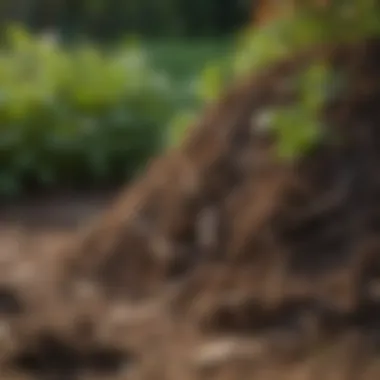
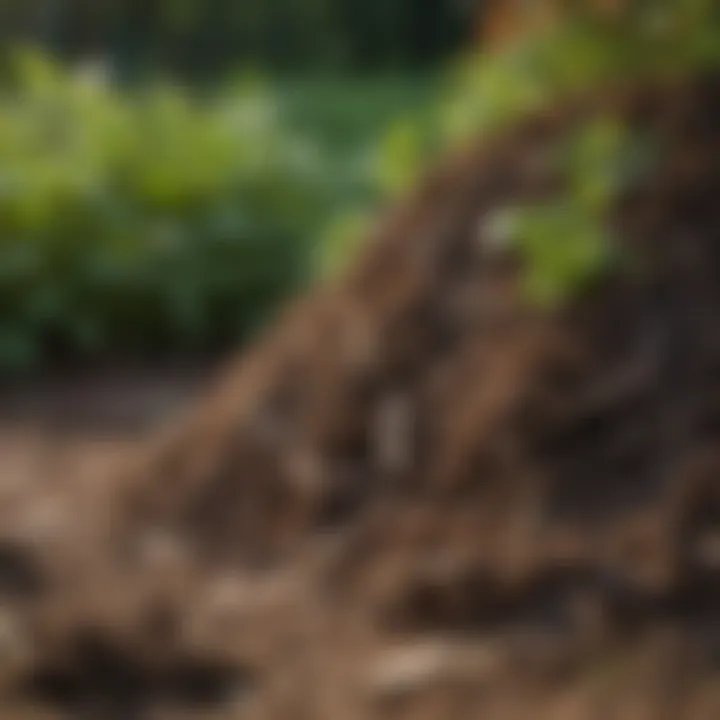
Why Organic Materials Matter:
- They enhance soil structure, allowing for better aeration and drainage.
- They support a vibrant microbial community, which transforms nutrients into forms plants can readily absorb.
- They help retain moisture, reducing the need for frequent watering.
When cardboard decomposes, it serves as a food source for these vital organisms, gradually enriching the soil. The holistic approach of using organic materials—like cardboard—aligns with the trends in sustainable gardening, making it not just a trend but an essential practice.
In summary, understanding the significance of weed management and the role that organic materials like cardboard play can transform gardening from a struggle into a successful endeavor. The following sections of this article will guide you through the physical properties of cardboard and how best to utilize it in your own gardening practices.
The Properties of Cardboard
The exploration of cardboard as a gardening tool extends beyond mere convenience; it taps into the very essence of the material's properties. Understanding these properties provides insight into how cardboard can serve as an effective weed barrier and improve overall garden health.
Composition and Structure of Cardboard
Cardboard typically consists of three layers: a central fluted layer sandwiched between two flat outer layers. This unique structure not only provides strength and durability but also contributes to its effectiveness in preventing weed growth. When placed atop the soil, the fluted structure allows for air and moisture circulation, which is vital for soil health and plant growth. Additionally, the composition of cardboard is usually paper-based, meaning it is derived from renewable resources. This fact brings a natural appeal to its use in gardening, especially for those who prioritize sustainability.
Key Points About Cardboard Composition:
- Renewable Material: Cardboard is made from wood pulp, aligning with eco-friendly practices.
- Layered Structure: The combination of flat and fluted layers contributes to its ability to block light, inhibiting weed growth.
- Versatility: Available in various thicknesses, different types of cardboard can be selected based on specific gardening needs.
Moreover, one needs to be mindful about the type of cardboard used. Not all cardboard is created equal; corrugated cardboard offers optimal benefits due to its sturdy build. It’s like choosing the best tool for a job—selecting the right cardboard can lead to successful outcomes in your gardening practices.
Biodegradability and Environmental Impact
A significant attribute of cardboard is its biodegradability. This means that when buried in the soil, it decomposes over time, enriching it with organic matter. The breakdown of cardboard not only suppresses weeds, but it also fosters a healthier soil ecosystem. The natural decay process invites earthworms and beneficial microbes, aiding in nutrient recycling and improving soil texture.
"Utilizing cardboard in your garden is not just about suppressing weeds; it’s about creating a thriving ecosystem beneath the surface."
Environmental Considerations:
- Decomposing Benefits: As cardboard breaks down, it acts as a food source for various soil organisms, promoting biodiversity.
- Alternative to Chemicals: By using cardboard instead of synthetic herbicides, gardeners contribute to a reduction in chemical run-off, which can harm local waterways and wildlife.
- Sustainable Gardening Practice: Implementing organic materials like cardboard aligns with sustainable gardening methods, reflecting a growing awareness among gardeners about the importance of environmental stewardship.
Benefits of Using Cardboard to Kill Grass
Using cardboard as a natural weed barrier has gained traction within sustainable gardening circles, and for good reason. As gardeners look for alternatives to chemical herbicides and traditional methods of weed control, cardboard presents a viable option that not only suppresses unwanted grass but also contributes positively to the environmental health of garden soil. This section explores the multifaceted benefits of employing cardboard for grass suppression, elucidating how its application can significantly elevate gardening practices.
Cost-Effectiveness Compared to Herbicides
One of the most compelling reasons to consider cardboard as a method for weed suppression is the cost savings. Many gardeners have experienced the financial burden associated with purchasing herbicides. Unlike chemical solutions, cardboard is often free, readily available from various sources—whether it’s untapped shipments at local stores, old boxes from home, or deliveries from the internet. Additionally, while chemical herbicides require ongoing expenditure, involving repeated purchases and safety precautions, a one-time application of cardboard can serve as a lasting solution. This not only reduces financial strain but also promotes a more frugal approach to gardening.
Soil Protection and Improvement
Another significant element of using cardboard lies in its positive impact on soil health. As cardboard decomposes, it not only suppresses grass but also contributes organic matter back to the soil, nourishing it over time. This breakdown process creates a rich, fertile environment that can enhance microbial activity and improve overall soil structure. Furthermore, cardboard acts as a protective barrier against soil erosion. When heavy rains or strong winds strike, cardboard can help keep topsoil intact, preventing nutrient loss.
"When choosing to garden organically, each decision counts. Cardboard stands out as one that yields both immediate and long-lasting benefits."
Encouragement of Beneficial Organisms
Using cardboard as a weed barrier fosters a hospitable environment for beneficial organisms in the soil. As the cardboard breaks down, it attracts earthworms and other decomposers, which play a critical role in enriching the soil. These organisms not only aerate the soil but also contribute to the nutrient cycle, enhancing plant growth. Moreover, beneficial fungi thrive in these environments as well, further elevating the health of the garden ecosystem. By paving the way for such organisms, gardeners can promote a more resilient and biodiverse system that can better fend off pests and diseases without synthetic interventions.
In summary, the adoption of cardboard as a tool for grass suppression provides tangible benefits—from monetary savings and soil enhancement to the nurturing of beneficial life underground. Through thoughtful implementation, gardeners can create thriving spaces free from both grass and the complications of conventional weed control methods.
How to Implement Cardboard in Your Garden
Implementing cardboard as a weed barrier can feel a bit like taking the plunge into a new swimming pool—there’s the initial uncertainty, but once you figure it out, you just glide right on in. Cardboard offers an eco-friendly approach that aligns well with the principles of sustainable gardening. This section will guide you through the steps involved in using cardboard effectively, ensuring that you make the most of this readily available resource.
Preparation of the Area
Before laying down your cardboard, a little preparation can go a long way. Start by choosing the right site—perhaps an area that’s been overtaken by unruly weeds or grass. It’s crucial to clear this spot first, removing any larger weeds and debris that might disrupt the cardboard layer later. While you don’t need to go all in and rip every last root out, eliminating the biggest offenders can help set the stage for success.
After clearing, it’s beneficial to moisten the ground. A light watering can help to settle the soil texture, making it more receptive to the cardboard you plan to add. Think of it like laying a foundation; a well-prepared base will support your efforts. Once the ground is damp, you can place the cardboard directly onto it, ensuring it covers your intended area completely.
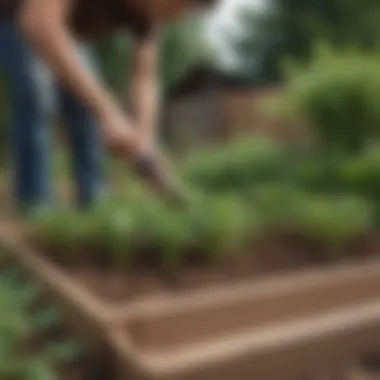
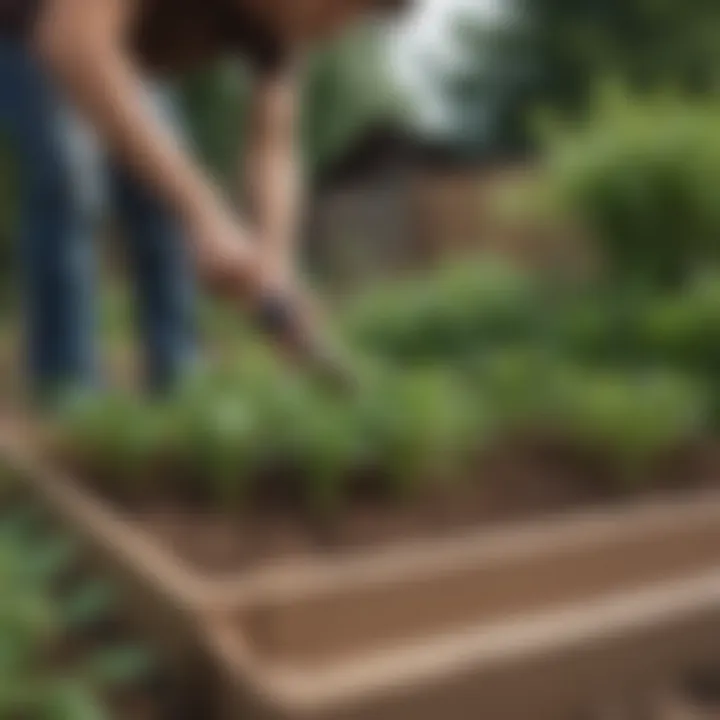
Layering Techniques for Maximum Effectiveness
When it comes to layering your cardboard, think of it like building a lasagna—each layer contributes to the final dish's overall flavor. Instead of just tossing down one flat piece, try these methods:
- Overlapping Sheets: Just like shingle roofing protects from leaks, overlapping pieces of cardboard prevents light from reaching potential weeds. Aim for overlaps of at least six inches to ensure full coverage.
- Moistening between Layers: After placing the first layer, some gardeners find that spraying it lightly with water increases its effectiveness. The moisture helps activate the cardboard’s natural decomposition process, which is a key part of its job.
- Top-dressing with Organic Material: Consider layering a few inches of mulch or straw on top of the cardboard. Not only does this protect the cardboard from the harsh elements, but it also enhances aesthetics. Plus, organic materials can serve as a snack bar for beneficial microbes, leading to better soil health over time.
Duration for Effective Grass Suppression
One of the most common questions is: "How long do I need to leave the cardboard down?" Well, like a good stew, grass suppression takes some time to really reach its full potential. Generally, you should aim for at least four to six weeks of covering. During this period, the cardboard will break down, smothering any grass beneath.
Patience is key. If you find that after a month there’s still some stubborn grass peeking through, don’t hesitate to add another layer of cardboard. It’s a proactive step that promotes better results. Keep an eye on the progress while reminding yourself that gardening often requires a touch of trial and error.
Blockquote: "There’s no one-size-fits-all in gardening; what works for one gardener may not work for another. Tailor your approach!"
In closing, the implementation of cardboard as a weed barrier brings along its own nuances, but with adequate preparation, strategic layering, and a bit of patience, you’ll find yourself on the path toward a flourishing garden, free of unwanted growth. Engage with your materials, embrace the learning curve, and watch as your gardening endeavors flourish.
Environmental Considerations
Understanding the pivitol role of environmental considerations in gardening practices is indispensable for anyone looking to maximize their garden's potential without sacrificing the planet's health. With a burgeoning interest in sustainability, embracing methods that are not only effective but environmentally sound is a critical mindset for today's gardeners. The use of cardboard as a weed barrier touches upon various aspects that contribute positively toward ecological preservation, soil enhancement, and long-term viability of gardening practices.
Sourcing Eco-Friendly Cardboard
When starting with cardboard, the first order of business is to identify sources that emphasize sustainability. It's not just about grabbing any old box; the origin of your cardboard can repercuss through various environmental impacts. Here are key strategies for sourcing eco-friendly cardboard:
- Local Retailers and Supermarkets: Many stores often discard or recycle large quantities of cardboard boxes. Building a rapport with your local retailers might yield a steady supply of clean, unblemished cardboard for your needs.
- Recycling Centers: Communities often have recycling hubs that provide cardboard. Ask if they have options available; they might even offer pre-sorted boxes that are cleaner and more reliable.
- Waste Reduction Initiatives: Look for programs within your community that encourage waste reduction. This could facilitate opportunities to acquire cardboard that would otherwise sit accumulating dust.
Sourcing cardboard that is free from harmful chemicals and additives is paramount. Sticking to brown cardboard that hasn't been dyed or treated with plastics ensures it breaks down into your soil without releasing undesirable substances.
Avoiding Contaminants and Chemicals
As you integrate cardboard into your gardening practices, taking special care to avoid contaminants is essential. Not all cardboard is created equal; some may have been exposed to harmful substances or include synthetic coatings. To navigate these waters:
- Inspect for Symbols: Before using any cardboard, check for recycling symbols or labels. Those that carry the #1 or #2 recycling codes are often safer choices.
- Treat only the Basics: Steer clear of glossy finishes, shiny surfaces, or cardboard with heavy printing. These can contain inks or coatings that do not decompose safely in the soil.
- Repurpose vs. New: Whenever possible, reuse cardboard from trusted sources—like your own deliveries—rather than sourcing new cardboard which might have come from less scrupulous origins.
"An ounce of prevention is worth a pound of cure." Taking the time to ensure the cardboard you choose is free from chemicals can safeguard both your garden and the broader environment.
By mindfully selecting cardboard and avoiding contaminants, gardeners can effectively reap the benefits of this sustainable approach. The absence of harmful elements promotes healthy soil that's capable of supporting vibrant plant life. Consider these points as foundational blocks for building an environmentally-conscious gardening practice.
Challenges and Limitations
Using cardboard as a weed barrier might seem like a charming solution for many gardeners, but it comes with its own set of challenges and limitations that need careful consideration. Understanding these factors is crucial for successfully implementing cardboard in the gardening process. By recognizing potential pitfalls, gardeners can tweak their strategies and still reap the benefits of using cardboard. In this section, we will explore specific elements regarding the limitations of cardboard as a weed barrier, while ensuring that homeowners and gardening aficionados are well-informed on how to maximize its utility.
Potential Issues with Cardboard in Wet Conditions
When we talk about the use of cardboard in wet conditions, a few thoughts immediately spring to mind. Cardboard is a material that can absorb moisture, and in rainy climates or during periods of excessive watering, it could break down faster than anticipated. This decomposition may hinder its efficacy as a weed barrier. In essence, it's like trying to keep a sponge dry in a downpour; it’s just not going to happen.
Here are some important considerations regarding wet conditions and cardboard:
- Decomposition Rate: If cardboard absorbs too much moisture, it can break down before your planned duration of suppression ends. This means that weeds may begin to sprout earlier than you wish.
- Preventing Displacement: Heavy rains can displace layers of cardboard, particularly if not secured properly. In such cases, you might find your carefully laid out barriers in disarray, potentially opening gaps for weeds to invade.
- Moisture Retention: While cardboard can help with moisture retention in the soil below, excessive moisture on the surface could lead to a less-than-ideal environment for planting or healthy plant growth.
Thus, if you live in an area prone to wet conditions, it may be wise to combine cardboard with other materials or consider alternative approaches for weed management that can withstand the elements.
Time-Frame for Results and Expectations
Every garden enthusiast has their own set of expectations regarding how quickly they want results. This leads to a common question: "How long will it take for cardboard to effectively suppress grass and weeds?" The truth isn’t always black and white, as different factors can significantly influence outcomes.
Here are a few things to keep in mind regarding the time-frame for expected results:
- Thickness of Cardboard Layers: Applying multiple layers of cardboard can significantly improve suppression time. However, it also means more time is needed before planting into the suppressed area. Expect anywhere from several weeks to a few months for total weed suppression.
- Type of Weeds: The type of weeds present plays a significant role. Persistent, deep-rooted weeds may take longer to suppress compared to shallower-rooted varieties.
- Environmental Conditions: Temperature and moisture levels directly impact the effectiveness of the cardboard barrier. During warm, dry conditions, grass may die off faster than it would in cooler temperatures.
- Maintenance and Observation: Regular observation can help gauge the effectiveness of your cardboard barrier. Adjustments may be needed along the way depending on your unique conditions. Lawn care is dynamic, and what worked one season may take a different execution the next.
Ultimately, patience is paramount. As you embark on this journey with cardboard, be prepared for varied timelines and don’t be discouraged if things don’t go according to plan immediately.
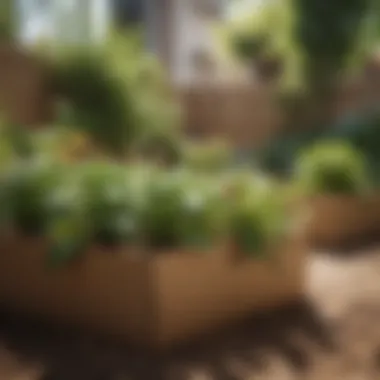
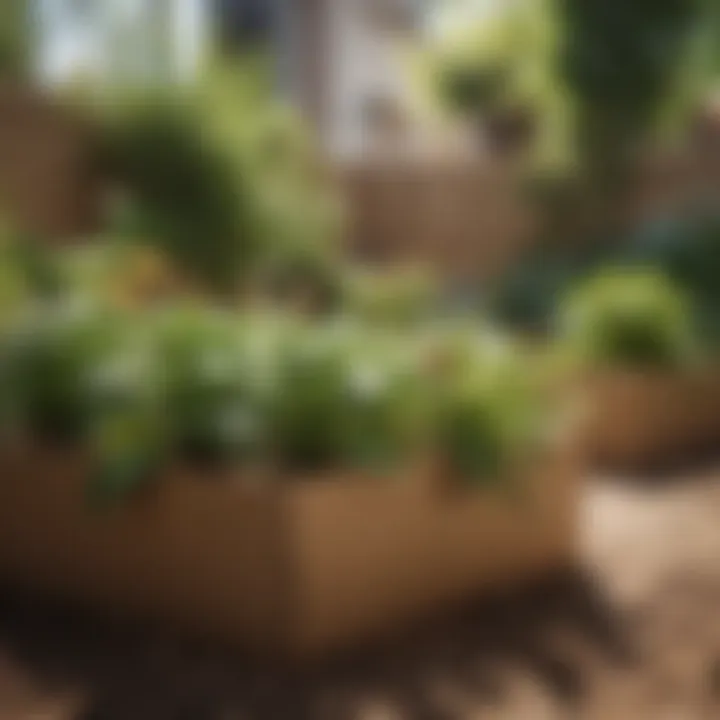
Long-Term Impact on Soil Health
When considering gardening practices, the long-term impact on soil health should be front and center. Healthy soil is teeming with life and provides the fundamental base for growing crops and plants. Utilizing cardboard as a weed barrier contributes significantly to this health by influencing organic matter content and fostering microbial life.
Organic Matter Contribution and Soil Structure
Cardboard, when layered on garden soil, decomposes over time. This decomposition process introduces organic matter into the soil, playing a crucial role in enhancing soil structure. As the cardboard breaks down, it adds carbon, which is vital for improving soil nutrient levels. This is key because organic matter binds soil particles together, creating a healthier soil structure that encourages water retention and aeration.
Conversely, using cardboard shifts the balance away from chemical fertilizers, steering gardeners toward a more sustainable practice that embraces nature. Cardboard breaks down slowly, providing a steady infusion of nutrients to the plants, which can substantially boost growth over time compared to traditional methods that sometimes lead to nutrient leaching.
"In gardening, the soil is not just a medium; it’s a living ecosystem that thrives with healthy organic matter."
Moreover, healthy soil structure encourages root growth, enabling plants to access moisture and nutrients more efficiently. A well-structured soil also reduces compaction, allowing more air to penetrate. All of these benefits compound over time, leading to a notable difference in overall garden productivity. Given that many gardeners yearn for flourishing plants, this alone can be a game-changer.
Microbial Activity Enhancement
The interplay of cardboard and microbial life can’t be overlooked. Cardboard acts as a food source for a myriad of microorganisms including bacteria, fungi, and various soil organisms. These microorganisms break down the cardboard and, in the process, create a rich, dynamic ecosystem that is essential for soil health. An increase in microbes results in improved nutrient cycling, enabling more efficient uptake of essential nutrients by plants.
As these microbes thrive, they foster a symbiotic relationship with plant roots. This symbiosis enhances nutrient absorption, particularly for elements that plants struggle to take up, like phosphorus. In essence, the more diverse the microbial community, the better the nutrient availability and overall plant health.
Another aspect to consider is how these microbial communities improve soil resilience. Healthy, diverse microbial populations can help in protecting the soil against diseases, pests, and environmental stresses, contributing to a more stable garden ecosystem. In the long haul, this balances the natural ecosystem, reducing the need for chemical interventions and fostering a sustainable gardening path that harmonizes with nature.
Overall, the long-term impacts of applying cardboard as a weed barrier reach beyond just weed control; they delve deep into enhancing soil health, contributing to robust plant growth, and encouraging sustainable practices that benefit both the gardener and the environment.
Case Studies and Practical Examples
Exploring real-world applications of cardboard in gardening is not just about theory; it brings to light the practical benefits and challenges faced by gardeners in diverse settings. This section underscores how effective cardboard can be as a weed barrier, showcasing its versatility and adaptability in various environments. Knowing how others have successfully implemented this method can provide valuable insights for homeowners and gardening enthusiasts looking to optimize their own practices.
Successful Applications of Cardboard in Various Gardens
There are numerous cases where gardeners have reaped the rewards of integrating cardboard into their organic gardening strategies. A community garden in Portland, Oregon, illustrates one of these successful applications. Here, members sought a cost-effective and environmentally friendly solution to combat the relentless growth of grass that encroached on their plots. By layering cardboard over the infested areas, they effectively blocked sunlight to the grass below.
The design was simple. They spread cardboard sheets over the affected ground, overlapping the edges to ensure no gaps were left for weeds to sneak through. After a few months, they peeled back the cardboard, revealing rich, dark soil ready for planting. Many of the community members have shared their findings on platforms like Reddit, where they discuss both their triumphs and setbacks in utilizing cardboard as a weed barrier.
Another example comes from a small homestead in rural New Hampshire. Here, the owner faced the challenge of managing a wildflower garden that had quickly become overrun by stubborn crabgrass. After researching alternative weed suppression methods, they opted to apply a series of cardboard layers, securing them with mulch from nearby trees.
The combination of cardboard and mulch not only inhibited the weeds but also enhanced moisture retention in the soil, promoting healthier flowers. Within one season, the homestead gardener reported back with visual testimonials showcasing their flourishing blooms, drawing the attention of local flower enthusiasts and horticulturists.
These case studies reveal that while using cardboard as a weed barrier requires some patience, the results can be quite rewarding. It encourages creativity in approach and adaptability in application.
Comparative Analysis with Other Weed Control Methods
When evaluating cardboard against traditional weed control approaches, several factors come into play — efficacy, cost, and environmental impact. Herbicides are often the go-to for many individuals seeking quick solutions; however, they come with toxicity risks and can harm beneficial organisms within the ecosystem.
In contrast, cardboard presents a non-toxic option. Here’s a breakdown of how cardboard stands against some other methods:
- Cost: Cardboard is generally free or very low-cost, especially if sourced from local businesses or recycling centers. In comparison, commercial weed killers can add up over time, impacting the gardener’s budget.
- Effectiveness: While chemical herbicides act fast, they can lead to soil degradation and need reapplication. Cardboard effectively blocks light, smothering existing weeds over time and enriching the soil as it breaks down — benefits that herbicides cannot claim.
- Environmental Impact: Many gardeners are becoming increasingly eco-conscious. Cardboard is biodegradable and adds organic matter to the soil, creating a positive feedback loop for the garden’s health, unlike chemical solutions that can lead to runoff and other environmental hazards.
As more gardeners turn towards sustainable practices, cardboard is proving to be an invaluable tool in the quest for healthy, flourishing gardens. It opens the door to experimentation and exploration, offering endless possibilities for creative gardening solutions.
Closure and Future Considerations
As we draw this exploration to a close, it's essential to underscore the multifaceted role that cardboard can play in gardening. It's not just an alternative to chemicals but a significant contributor to health of the soil and sustainable practices. By utilizing cardboard as a weed barrier, gardeners can cultivate a greener landscape, promoting not only aesthetic appeal but also biodiversity. What’s more, it resonates with the larger movement towards eco-conscious gardening, which is becoming increasingly relevant in today’s world.
Summary of Key Points
In summarizing the key points of using cardboard in gardening, we can highlight the following:
- Cost-Effectiveness: Cardboard is an inexpensive, often free, resource that can dramatically reduce garden expenses when compared to traditional weed control methods.
- Soil Enhancement: As cardboard decomposes, it enriches the soil with organic matter, leading to healthier plant growth.
- Biodiversity Promotion: Using cardboard can create habitats for beneficial organisms like earthworms and various microbes that are crucial for a thriving garden ecosystem.
- Environmental Considerations: Sourcing cardboard responsibly plays a key role in minimizing environmental impact, ensuring that gardeners can maintain their practices sustainably.
Adopting Sustainable Practices in Gardening
Transitioning to sustainable gardening practices doesn’t require a major overhaul; small changes make a significant difference. When incorporating cardboard as a weed barrier, consider these strategies:
- Local Sourcing: Gather cardboard from local businesses or residential waste rather than sourcing new cardboard, reducing your carbon footprint.
- Mindful Layering: Ensure that you layer cardboard appropriately to allow for moisture retention while suppressing weeds effectively. Overlapping pieces can create a sturdy barrier.
- Monitoring and Adaptation: Keep an eye on how well your cardboard method works. If issues arise, such as fungal growth during wet conditions, adapt your approach based on your garden’s specific needs.
- Sharing Knowledge: Engage with local gardening communities, both online at platforms like reddit.com and in person. Sharing experiences can help refine strategies and promote sustainable practices more broadly.
By embracing these sustainable practices, gardeners not only foster a nurturing environment for their plants but also contribute to a healthier planet. Every action counts, and small steps lead to big changes in our gardening ecosystems.







